 Well, finally some sunshine, after goodness knows how much grey cloud and rain. Chilly at nights, but doesn’t it lift the spirits?
Well, finally some sunshine, after goodness knows how much grey cloud and rain. Chilly at nights, but doesn’t it lift the spirits?
So it’s time to take a turn in the garden, and you will be surprised what is already peeping out from the soil – lots of very early spring bulbs or corms, such as snowdrops, dwarf iris, crocus anemone blanda and early narcissus, and even some brave herbaceous perennials. Deciduous shrubs are starting to bud, catkins are on the hazel and willow in our hedgerows and some early shrubs, such as the flowering currants, already have some flower. It’s all a sign of the cycle we know so well beginning again.
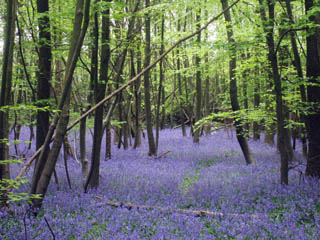 If, however when you take that turn, you find you don’t have much to look at, there is something you can do about that in readiness for next year. The first thing is to identify the gaps and see where you’d like some very early spring interest. We mentioned hellebores at length last month, and there are still lots available which are frankly stunning at the moment.
If, however when you take that turn, you find you don’t have much to look at, there is something you can do about that in readiness for next year. The first thing is to identify the gaps and see where you’d like some very early spring interest. We mentioned hellebores at length last month, and there are still lots available which are frankly stunning at the moment.
These and some of those other space-fillers you can buy now, and indeed it is desirable to do so. Snowdrops (Galanthus) and English bluebells (Hyacinthoides non-scripta) are best planted “in the green” to ensure they take and naturalise well. “In the green” simply means that the bulb has leaves and even flower in the case of snowdrops – nothing more technical than that. For some reason, both these perform better if they are planted in this condition. Both are very freely available from good bulb suppliers and are much more cost-effective if you buy them in bulk
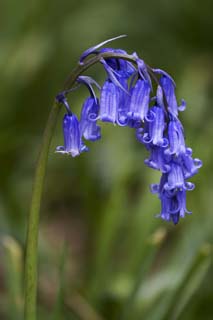 For a good instant show, bulbs suppliers recommend about about 200 snowdrops or 150 bluebells per square metre/yard of ground. If, like us, you are a bit stingy and prepared to wait a few years for that “wow” display, divide that number by 3 or 4. (Helen – I bought one little snowdrop in a pot about 3 years ago and now there are 5 or 6 bulbs. ) In terms of variety, there is only one English blue bell, with Latin name as above, and we are sure we don’t need to remind you not to harvest any from the wild. It is illegal, and very bad karma will result.
For a good instant show, bulbs suppliers recommend about about 200 snowdrops or 150 bluebells per square metre/yard of ground. If, like us, you are a bit stingy and prepared to wait a few years for that “wow” display, divide that number by 3 or 4. (Helen – I bought one little snowdrop in a pot about 3 years ago and now there are 5 or 6 bulbs. ) In terms of variety, there is only one English blue bell, with Latin name as above, and we are sure we don’t need to remind you not to harvest any from the wild. It is illegal, and very bad karma will result.
With snow drops, there are many varieties available, some going for ridiculous sums of money. We don’t know quite why, but snowdrops seem to attract the gardening obsessives who must have the rarest varieties, even though there you’d have to put them under the microscope to spot the differences. Quite honestly, we’d rather spend the money on a nice holiday, but there you are; horses for courses. In our opinion though, you can’t go wrong with the classic snowdrop, Galanthus nivalis, which we are sure you would all recognise as the classic willowy, delicate snowdrop about 15-20cm in height You just can’t beat a swathe of these.
Both bluebells and snowdrops like a lightly shaded position, and this is provided well in amongst deciduous trees and shrubs, and if you think about where you see them in the wild, that’s the sort of conditions they will like in your garden too. And don’t worry about the cold nights we have forecast for the next week or so – these won’t be affected by any frost, although you will find it a little tougher to dig the soil. Just think of it as enforced exercise…..
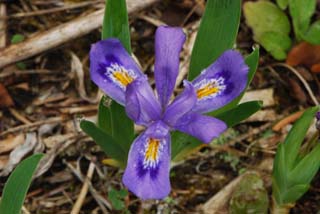 And as for those other gaps – dwarf iris, cyclamen coum, anemone, narcissus, crocus and hyacinth are best planted in the autumn, so write yourself a list of what to buy then. Some garden centres will also have potted bulbs which you can just drop into the soil in bulk, if you prefer to get a hit of colour now.
And as for those other gaps – dwarf iris, cyclamen coum, anemone, narcissus, crocus and hyacinth are best planted in the autumn, so write yourself a list of what to buy then. Some garden centres will also have potted bulbs which you can just drop into the soil in bulk, if you prefer to get a hit of colour now.
Hydrangeas are a large part of the landscape down in Cornwall, and at the end of March, we will be approaching the point when, provided the frosts look like they have passed for the year, we can think about pruning them. Some folks swear that hydrangeas can be pruned from Easter onwards, but given that Easter can move within a 5-week period, this doesn’t seem like sage advice to us. Look out of the window, check the temperatures, and if we are consistently a bit warmer, go for it. Otherwise, hold off.
There are several types of hydrangea, and they can be divided into 2 broad pruning groups.
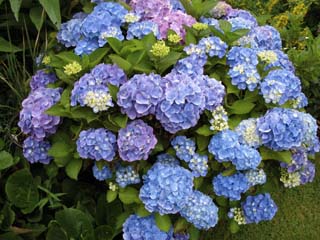 Hydrangea macrophylla are the big blowsy balls of colour we most commonly see – often in shades of pink, blue and white – and the lacecap varieties which have a few rings of bracts around tiny central flowers. These flower on old wood, and so at this time of year, simply deadhead last year’s blooms back to a good pair of buds, leaving a good amount of old wood. Take out also one or two old stems to encourage new growth which will flower better in future years. If you prune too hard, you won’t get good or possibly any flower this year. This pruning method also applies to H. aspera (spear-shaped, quite furry leaf), and H. quercifolia (the oak leaved variety with beautiful autumn colour)
Hydrangea macrophylla are the big blowsy balls of colour we most commonly see – often in shades of pink, blue and white – and the lacecap varieties which have a few rings of bracts around tiny central flowers. These flower on old wood, and so at this time of year, simply deadhead last year’s blooms back to a good pair of buds, leaving a good amount of old wood. Take out also one or two old stems to encourage new growth which will flower better in future years. If you prune too hard, you won’t get good or possibly any flower this year. This pruning method also applies to H. aspera (spear-shaped, quite furry leaf), and H. quercifolia (the oak leaved variety with beautiful autumn colour)
Hydrangea paniculata and arborescens form less of a woody framework and flower better on newer wood so need to be pruned differently. Take back each stem to a healthy pair of buds about 15 to 30cm from the base of the plant.
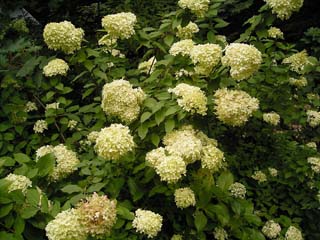 If you have any doubt which varieties you have, take a picture into your friendly local garden centre and they will help you identify it.
If you have any doubt which varieties you have, take a picture into your friendly local garden centre and they will help you identify it.
Since gardening is a continuum based on your weather, rather than a month by month list of tasks, take a look again at which seeds you can plant now – it’s not too late for any of those we mentioned in last month’s column, vegetable and flowers alike. Remember it probably is still too early to plant directly into the soil, unless you have raised beds which have been covered all winter, or you plan to use cloches to keep the soil warmer like a mini greenhouse. Instead of stealing a march on the growing season, you will probably just waste your seed, as it will rot, and you will find yourself having to do it all again in a few weeks.
And on the subject of peaking too soon, we were mooching around one of the large, chain garden centres this week (in the interests of market research, of course) and were staggered to see that they already have masses of tiny summer bedding plants, and vegetable plants on sale. Noticeably, they were indoors in their main shop, which are by no means ideal conditions as they get no natural daylight and are in a draft from the doors.
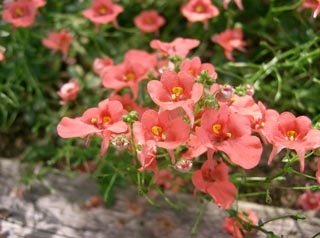 Unless you are a very seasoned gardener (in which case you might well be growing these from seed anyway) and have masses of time to spend tending, feeding, re-potting and nurturing these little plants until they can be put out in late April/May, we would urge great caution about buying them now. It is barely March! If you add up all the time and effort and resources you will need to put into them in between times, and the probability you will lose some of them, they really are not the bargain they appear.
Unless you are a very seasoned gardener (in which case you might well be growing these from seed anyway) and have masses of time to spend tending, feeding, re-potting and nurturing these little plants until they can be put out in late April/May, we would urge great caution about buying them now. It is barely March! If you add up all the time and effort and resources you will need to put into them in between times, and the probability you will lose some of them, they really are not the bargain they appear.
Right, that’s us down from our soapbox for a day or two. Don’t eat too many Easter eggs (if you have too many, we have a hungry crew at Pengelly who will take them off your hands) and we’ll see you again in April.
Sarah Daniel and Helen Robins, Pengelly Garden Centre

